Back in March, I was looking forward to an upcoming trip to Switzerland and Liechtenstein with my mum for our annual mother/daughter trip, but then Covid–19 came along and changed our plans. We postponed our trip to November, thinking that the pandemic for sure would be over by then. Well, we were wrong. November came and still no change. Our flights were cancelled for the second time, and the Danish government once again advised against travel to all countries. But luckily, Denmark is a beautiful country and my mum and I were able to change our plans for a destination within the country instead.
We chose Ærø. A small Danish island surrounded by many much smaller islands in the South Funen Archipelago, perfect for a weekend getaway. Ærø isn’t Switzerland, but it turned out to be a wonderful alternative.
We set off towards Svendborg on Funen in the late morning and arrived in good time for our ferry at 01.05 PM. The sky was rather grey but the calm wind secured a smooth sailing through the sea with its many islands. 75 minutes later, we docked in the tiny village of Ærøskøbing. Welcome to Ærø!

Ærøskøbing is nothing short of a fairytale. We spent the next few hours exploring the village, walking its cobbled streets and admiring its rows of cozy colourful houses, many of them with decorative doors and Christmas lights.
Ærøskøbing has been inhabited since the 12th century and the oldest still–standing houses date as far back as to 1645! It feels as though time has stood still there while the rest of the country moved on. Personally, I prefer old villages with history and charm over modern concrete jungles, and Ærøskøbing is one of the prettiest of its kind.
We settled for a while at Den Gamle Købmandsgaard, an atmospheric shop and café, for coffee, hot chocolate and cake, before exploring some of Ærøskøbing’s many cozy shops. One shop full of wooden toys made me feel like we were back in the late 1800s. Another had me falling in love with a beautiful wooden broom (I wonder if this is what its like being an adult?).


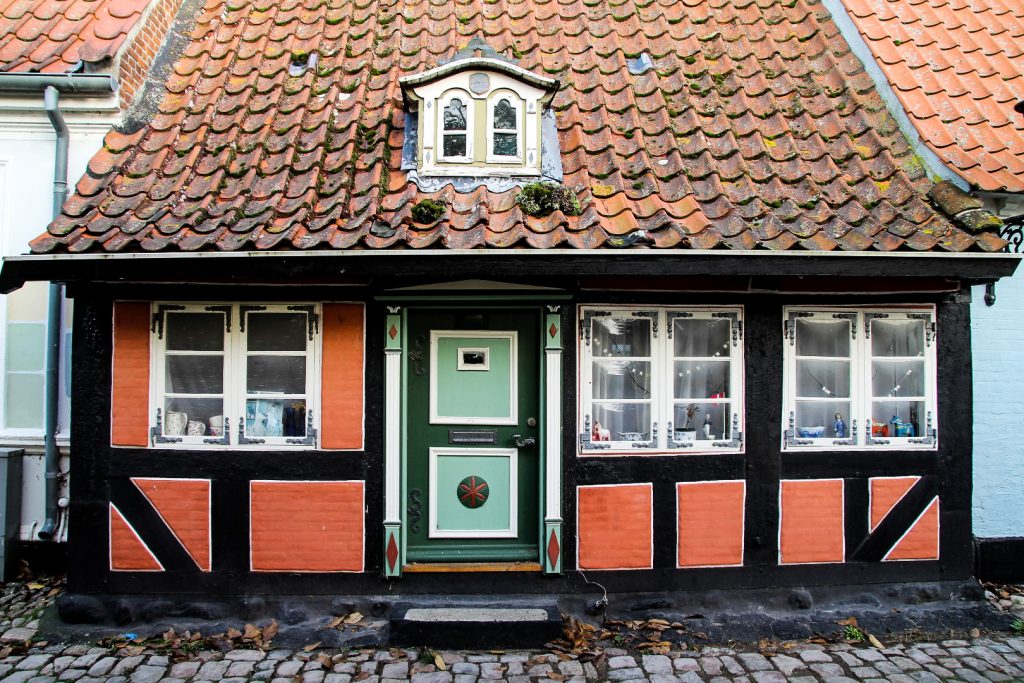
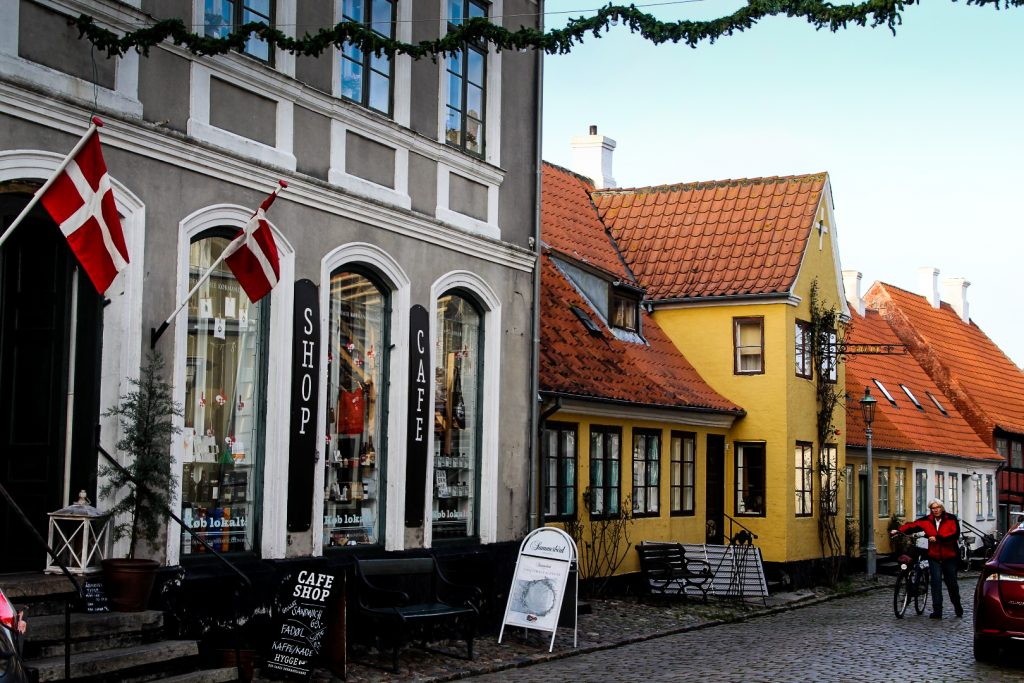

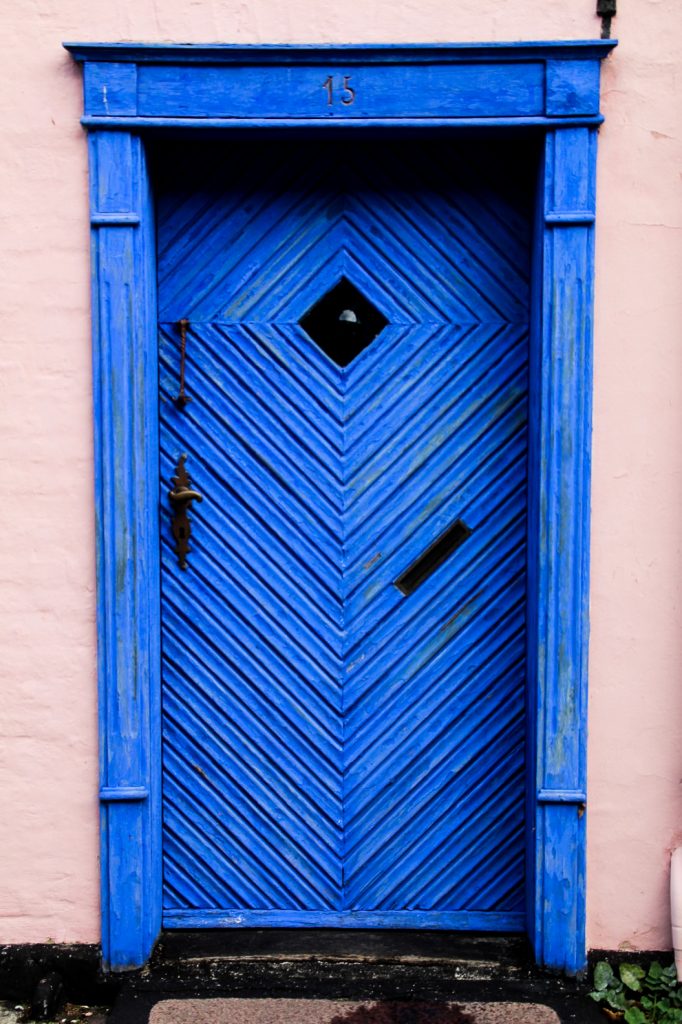
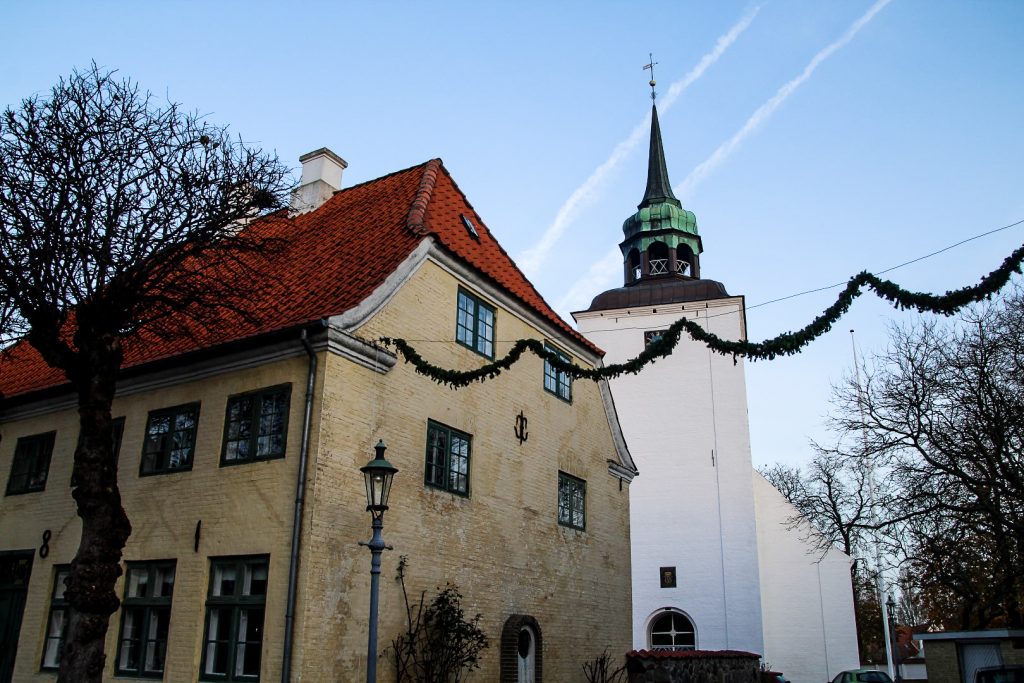

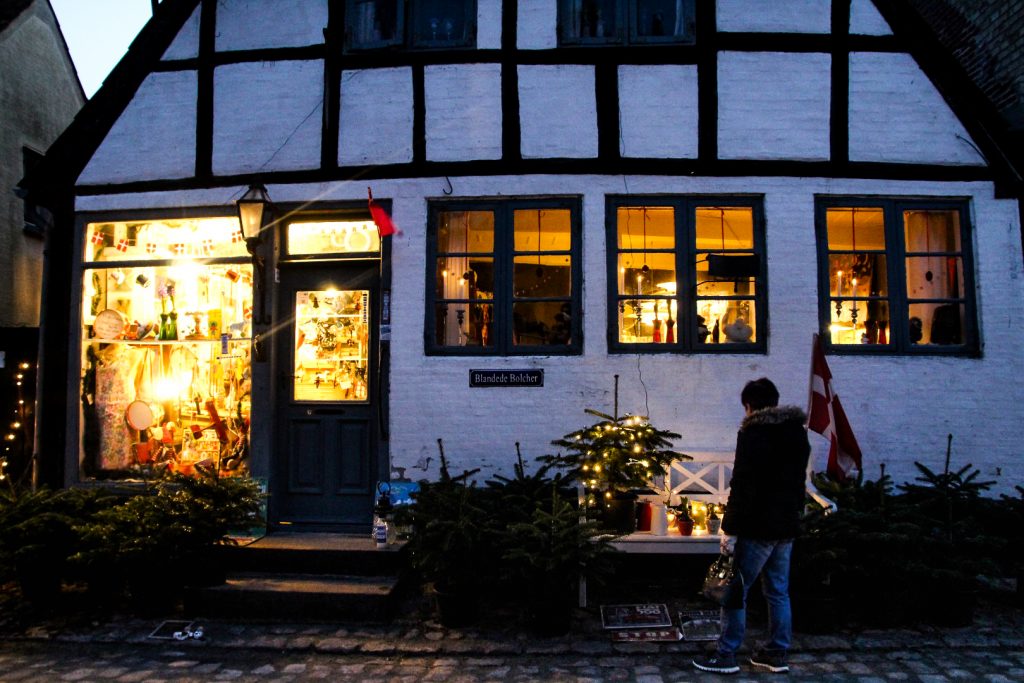
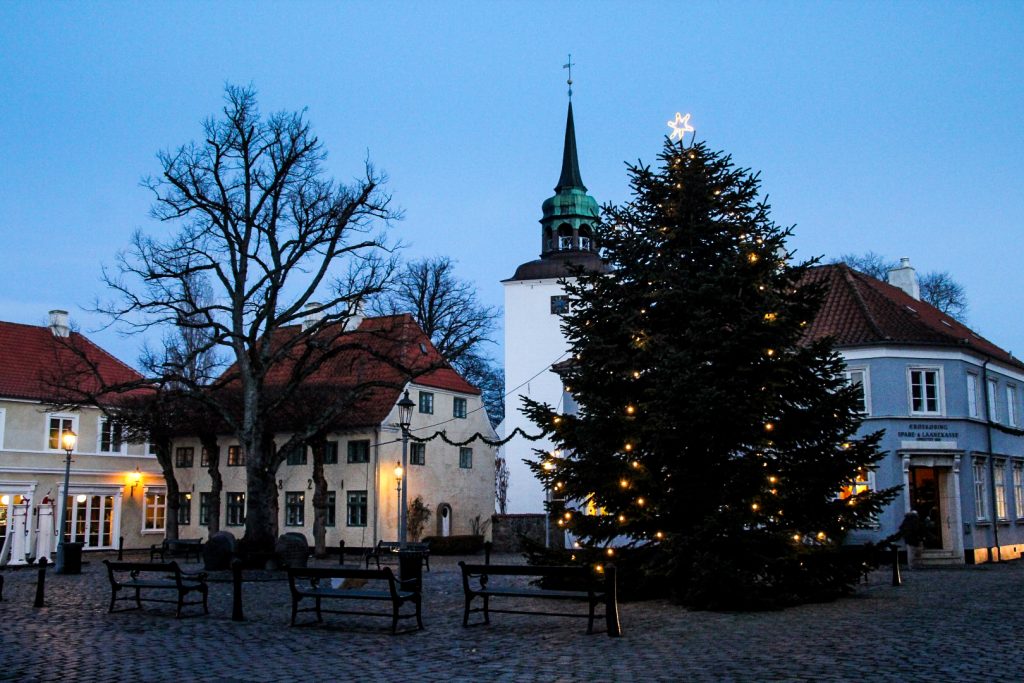
Darkness settled in early, reminding us that we were in November, an unusual time to visit a Danish island. We drove to Marstal, the biggest village on the island, where we stayed in the coziest little apartment, decorated invitingly with Christmas lights. After a quick tour of the place by the very friendly owner, we set out for a walk through Marstal to find food and discover its Christmassy streets. What a magical time to be on Ærø!
With only one full day to explore the rest of the island, we set our alarms for early o’clock the following day. We ate our breakfast as the sun rose, revealing a beautiful blue sky dotted with clouds. Just perfect.
Afterwards, we set off for our first of two hikes that day, along the isthmus Eriks Hale to Frederiksøen, a long and narrow strip of low sand dunes and tiny lakes that stretch around the harbour of Marstal. We followed a well–trodden footpath of 2 km through the varying landscapes, passing by a sandy beach with a row of tiny, colourful beach huts, something that is unique to Ærø. At the end of the footpath, we came to an abandoned chalk oven from 1863 which was used to burn chalk for house building in Marstal. It was a nice little surprise to see that at the end of the hike!
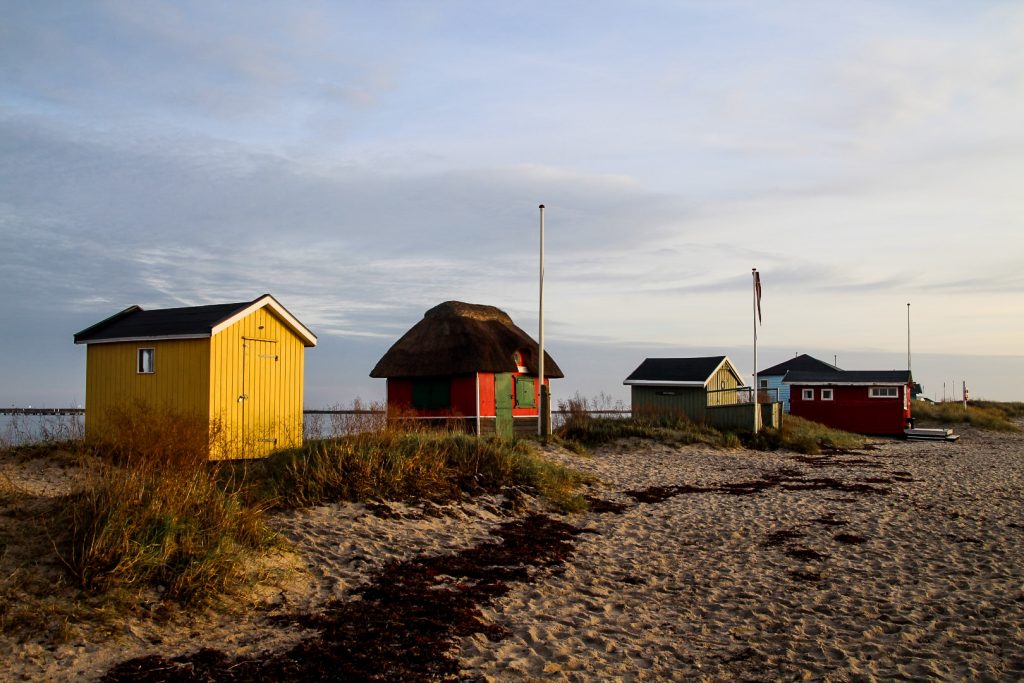

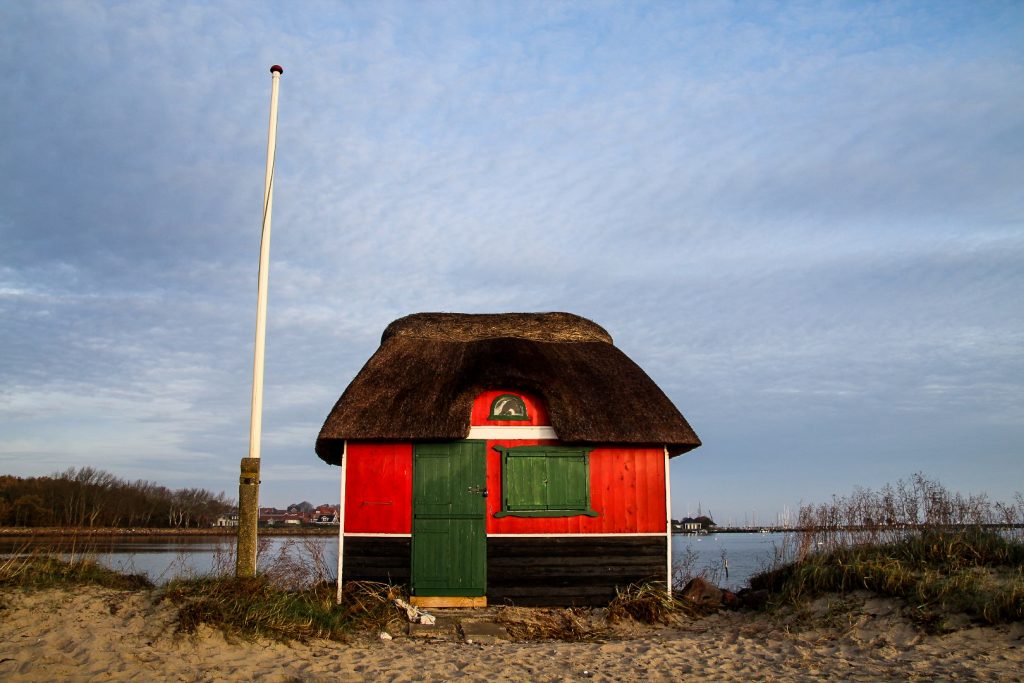
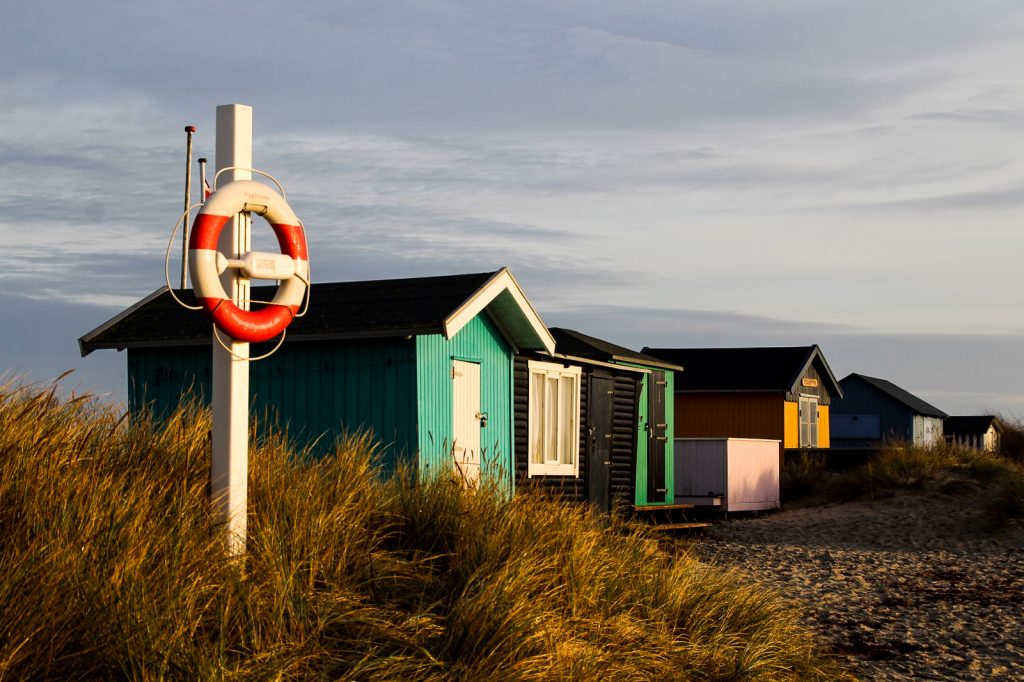

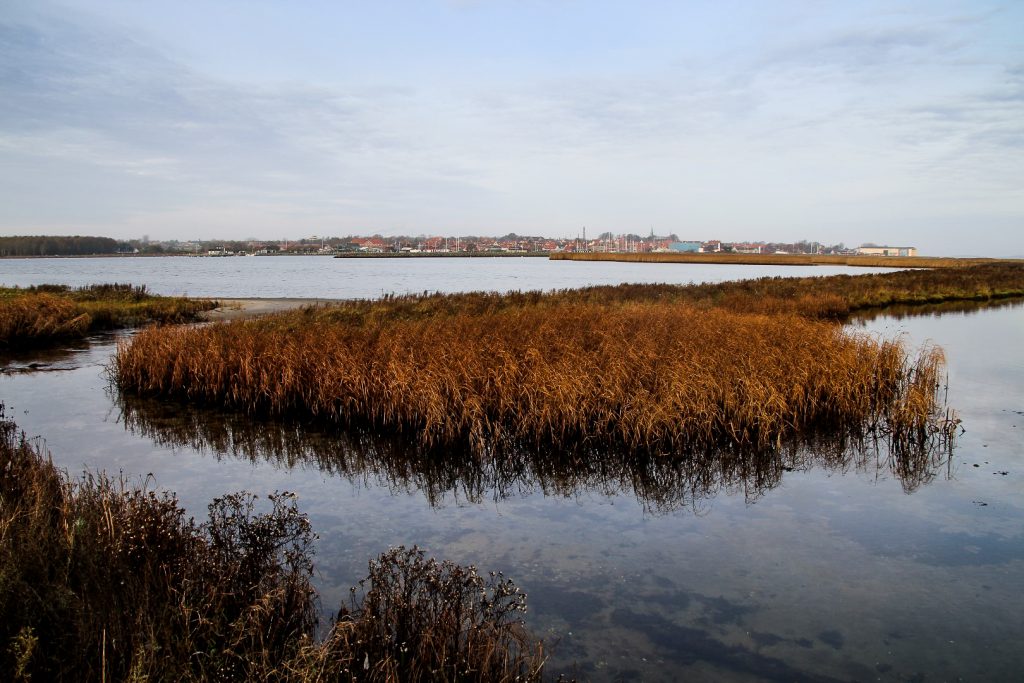

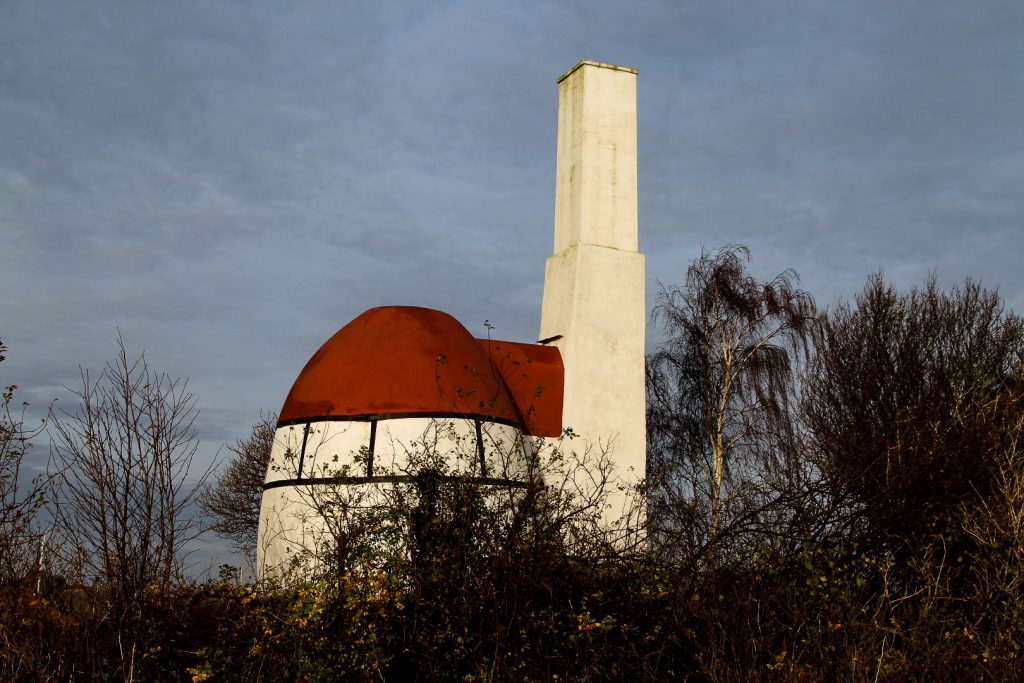

When we got back to the car, we headed west to one of Ærø’s many archaological sites, Kragnæs Jættestue, a passage grave from the Neolithic. The burial site is located on a field in the middle of nowhere, lonely, but it wasn’t always like this. The area was once dotted with megalithic structures but this passage grave was the only one that was allowed to survive while the rest were demolished and the rocks used for construction work. Several of these plots were excavated in the 1970s along with the passage grave at Kragnæs, which was also restored and renovated to its former glory.
I had read that the entrance was closed off due to the risk of collapse, but it must’ve been secured in recent years as it was open when we got there. I crawled in to let history embrace me!
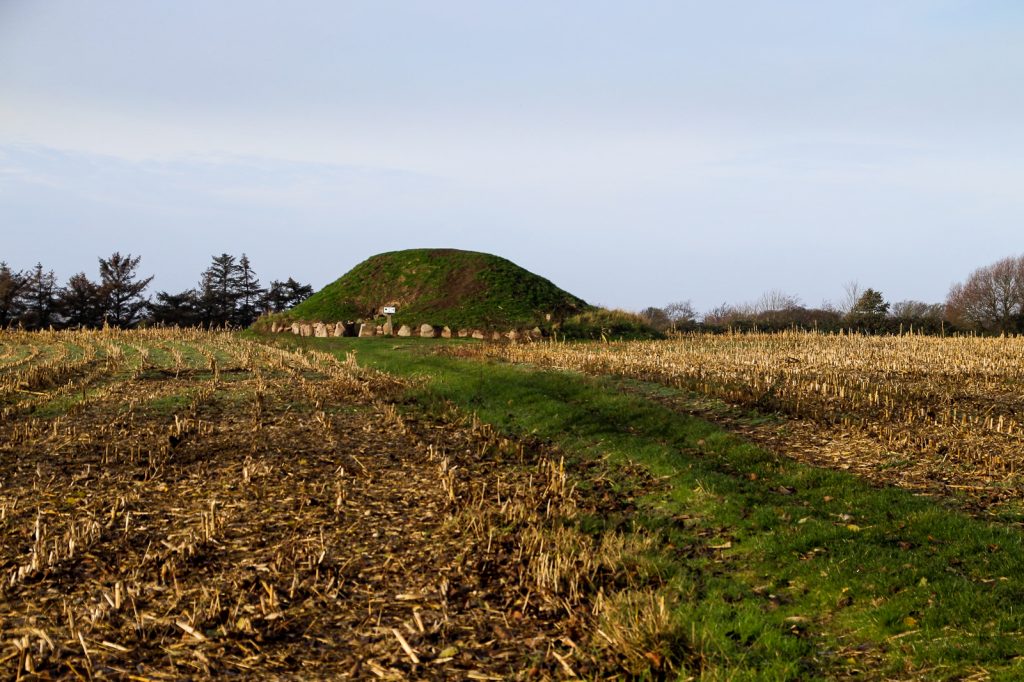
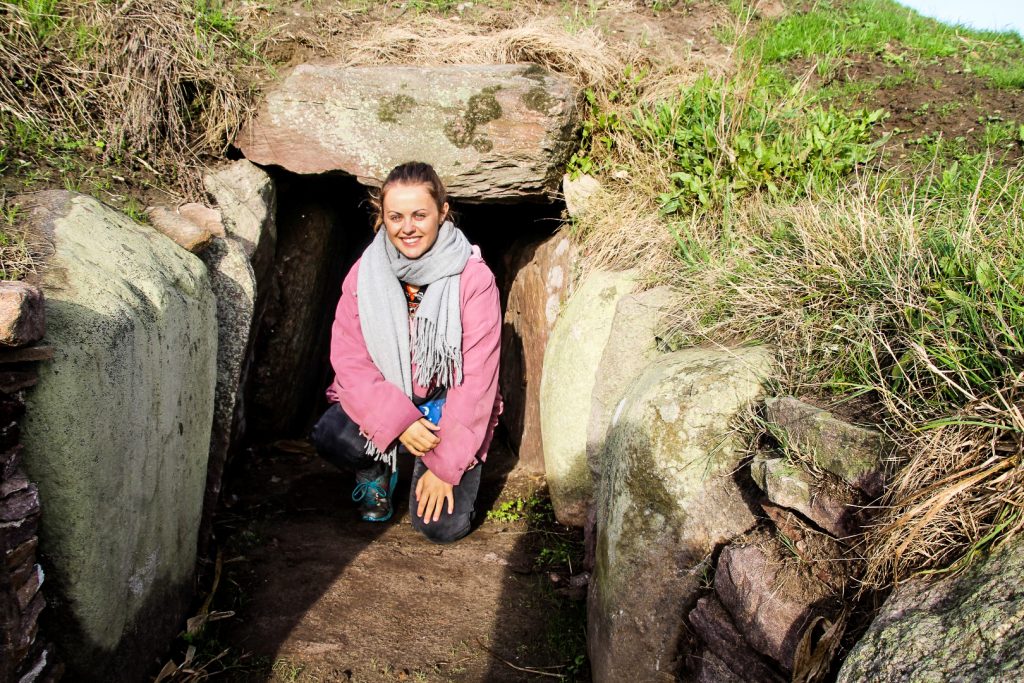
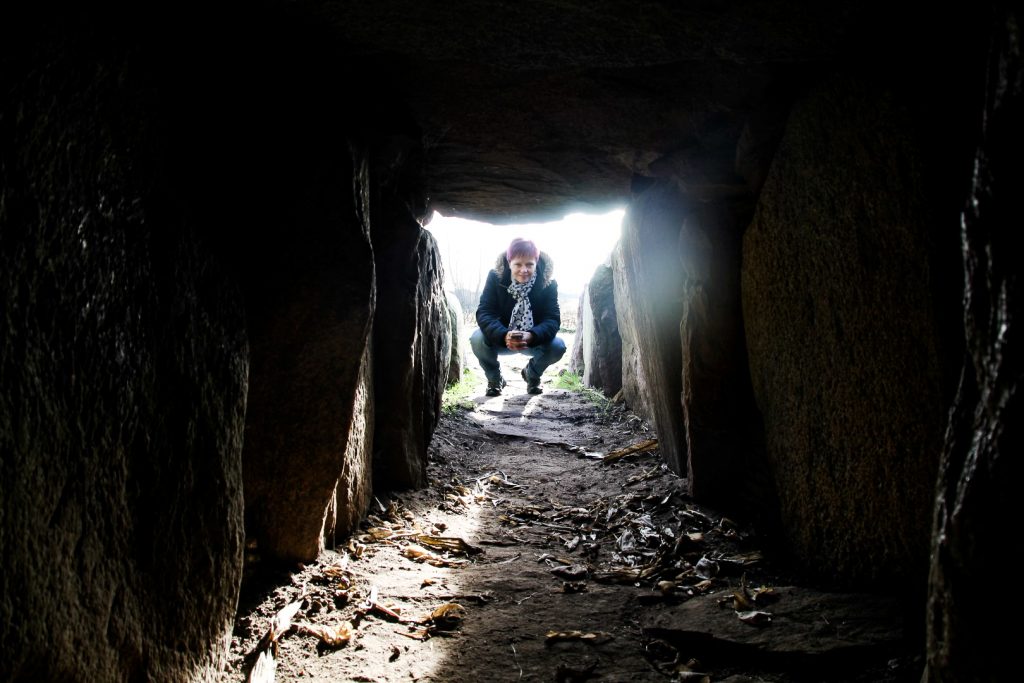
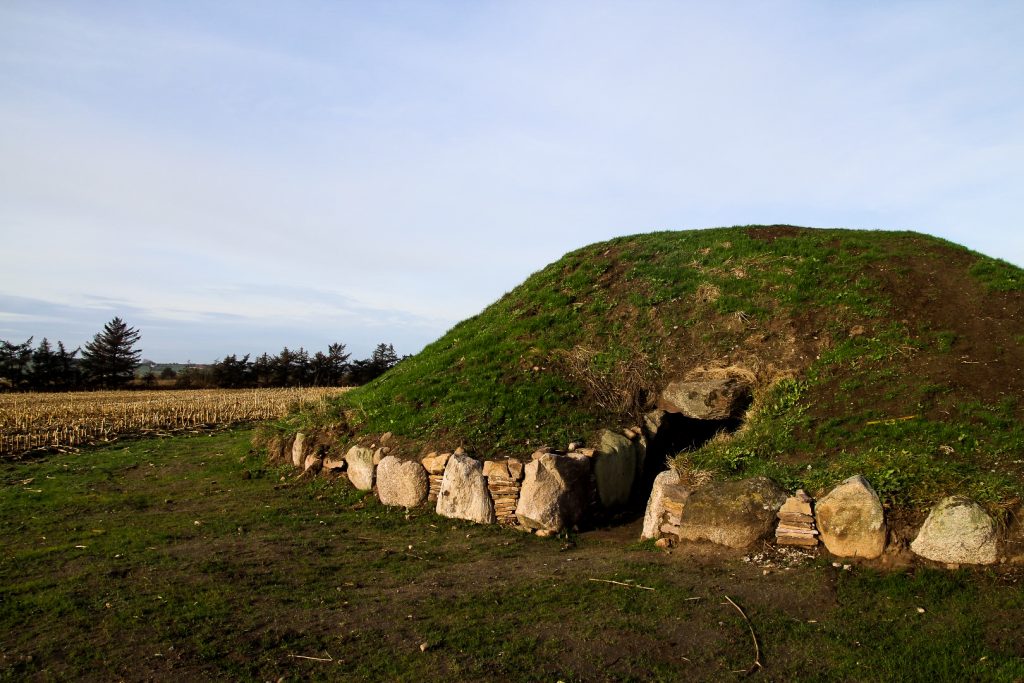
It was time to drive to the northwestern end of the island where the lighthouse, Skjoldnæs Fyr, from 1881 guards the island’s only golf course. The lighthouse was built 22 meters tall so it could be seen by the Danish friends and families in Kiel that became part of Germany with the loss of Schleswig in 1864 – but whether or not they can actually see it, I don’t know!
57 steps lead us to the viewing platform where we could stalk the tiny golfers from above with Ærø’s beautiful landscapes rising behind them.

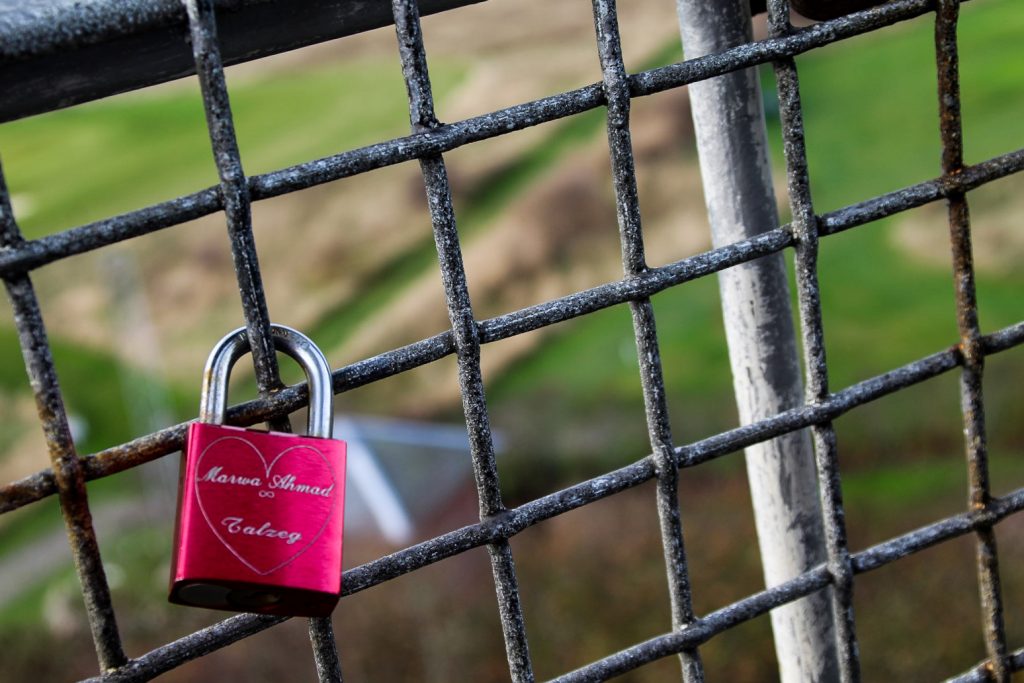
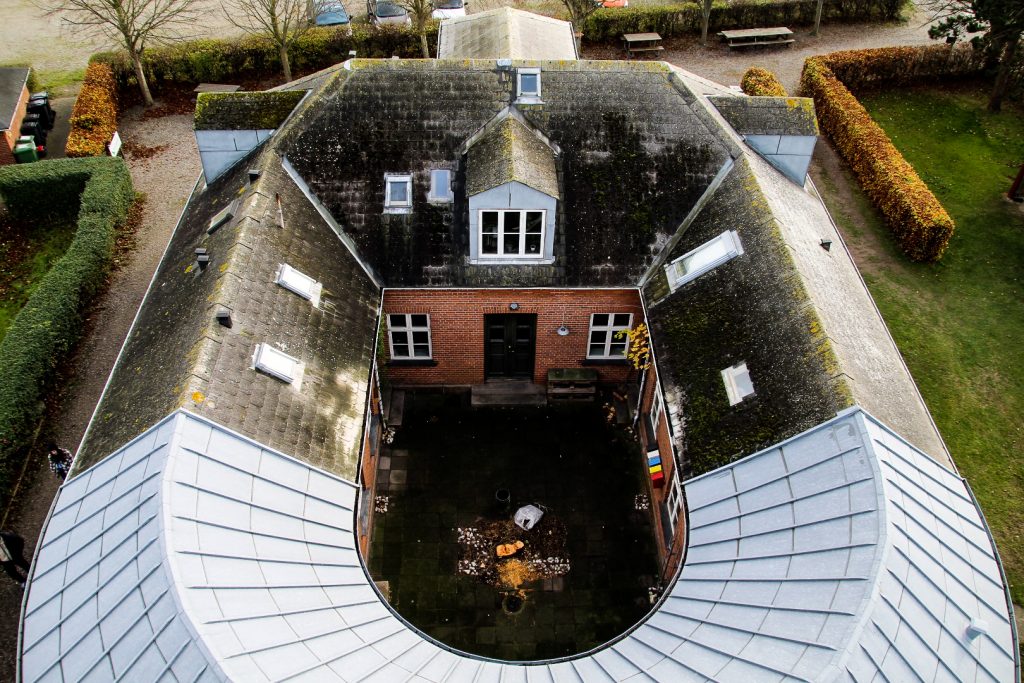
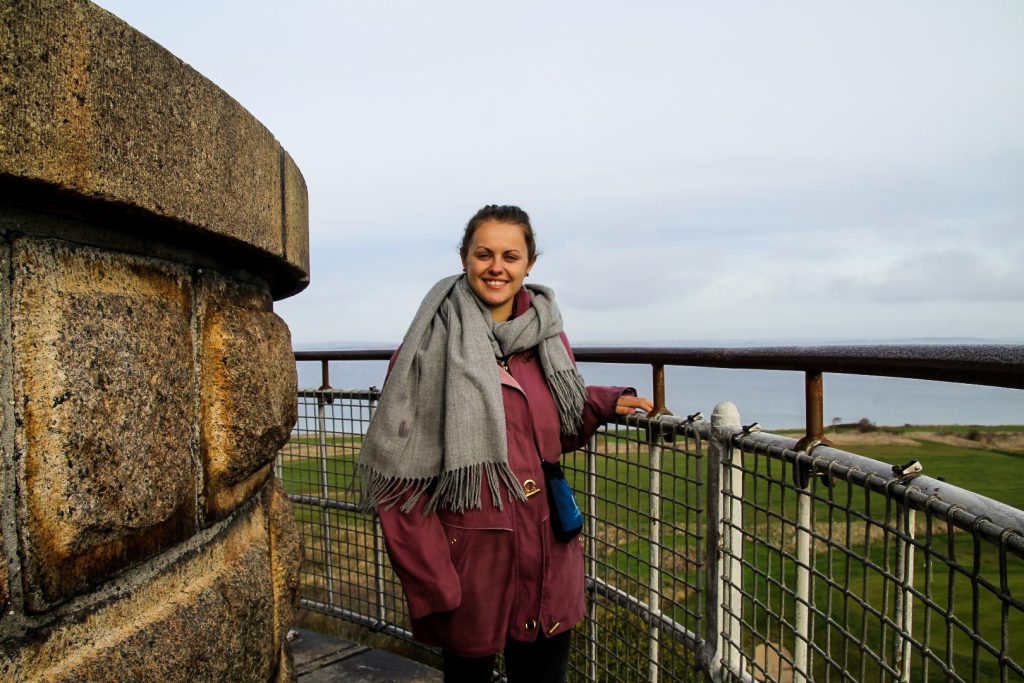
Starting to get hungry, we headed to Søby, the largest village on the northwestern part of Ærø, where we settled for fries and cake at Café Arthur. The café was quite cozy but the village itself wasn’t very interesting, so we soon continued our roadtrip a bit further south to Vitsø.
Vitsø is the largest lake on the island, and it is home to a pleasant 5 km trail that we spontaneously decided to embark on. We started at the old Dutch mill, Vitsø Mølle, from 1838, which is the only one of its kind in Denmark that is preserved.
From the mill, we followed a well–trodden footpath past a field full of cows and through a meadow that revealed untamed nature. This section didn’t take us close to the lake until the very end where we decided to take a little detour to the nearby 16th-century manor, Søbygaard. The manor is often referred to as a castle (by the locals!), but it really doesn’t look like one despite being surrounded by a moat. It was a nice area for a walk though!
We headed back towards the lake and continued our loop on the southern side of it, this time hiking along the banks of the quiet lake, back to the old mill and the car that was waiting patiently for us to return.
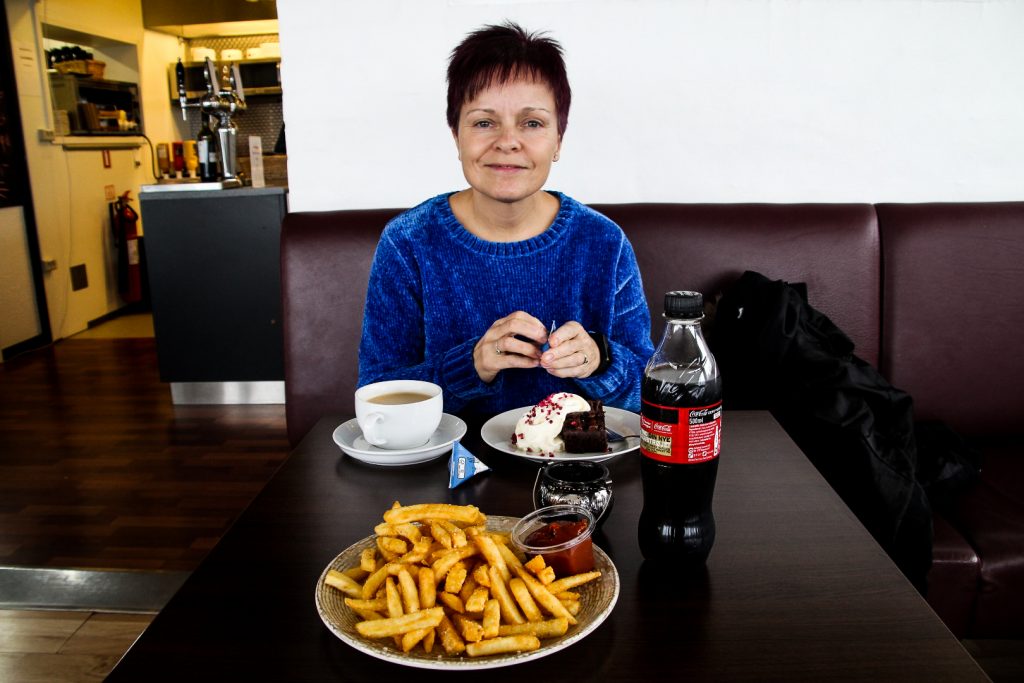
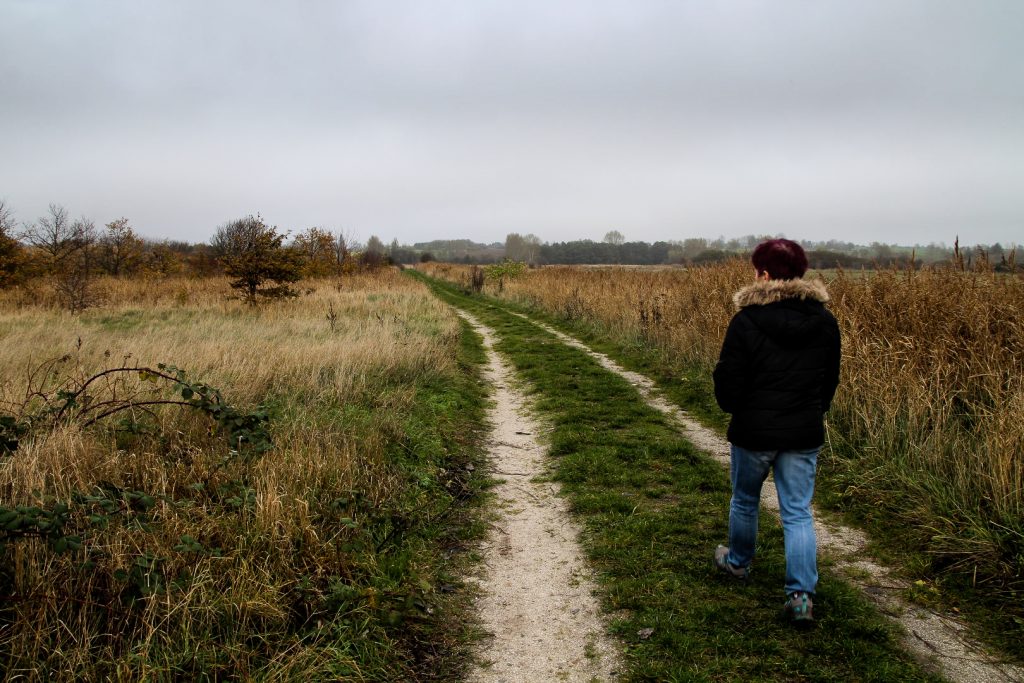

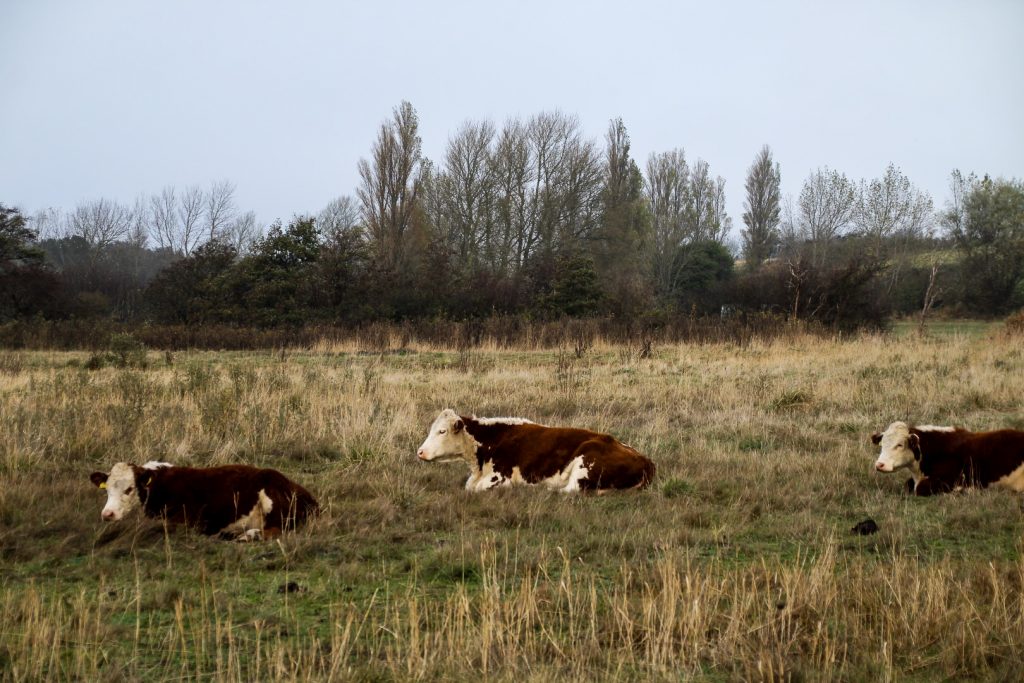
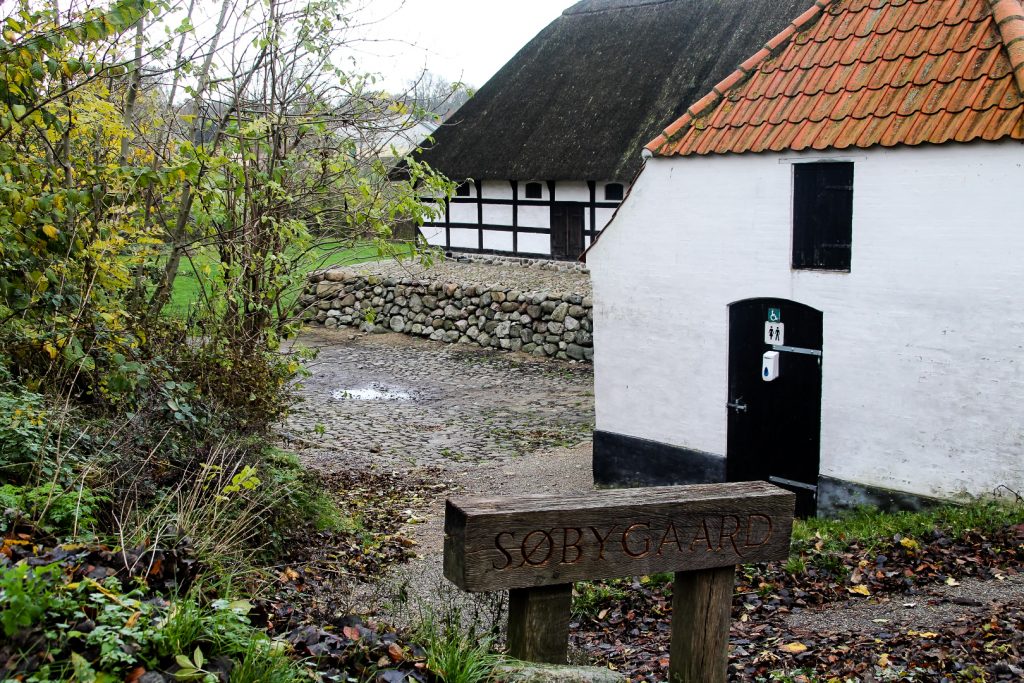
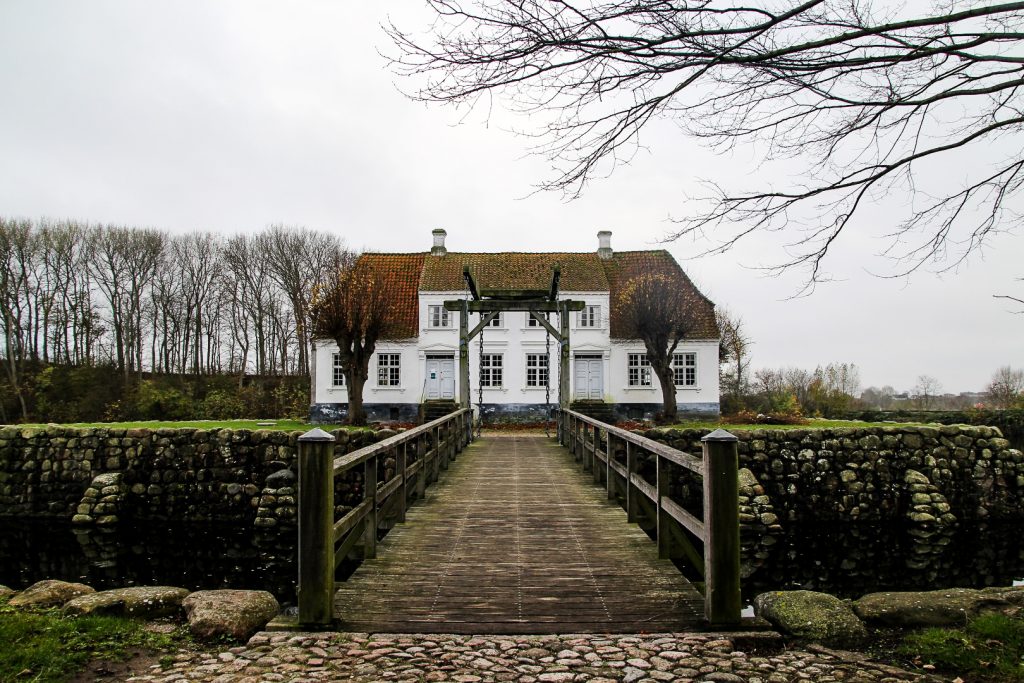

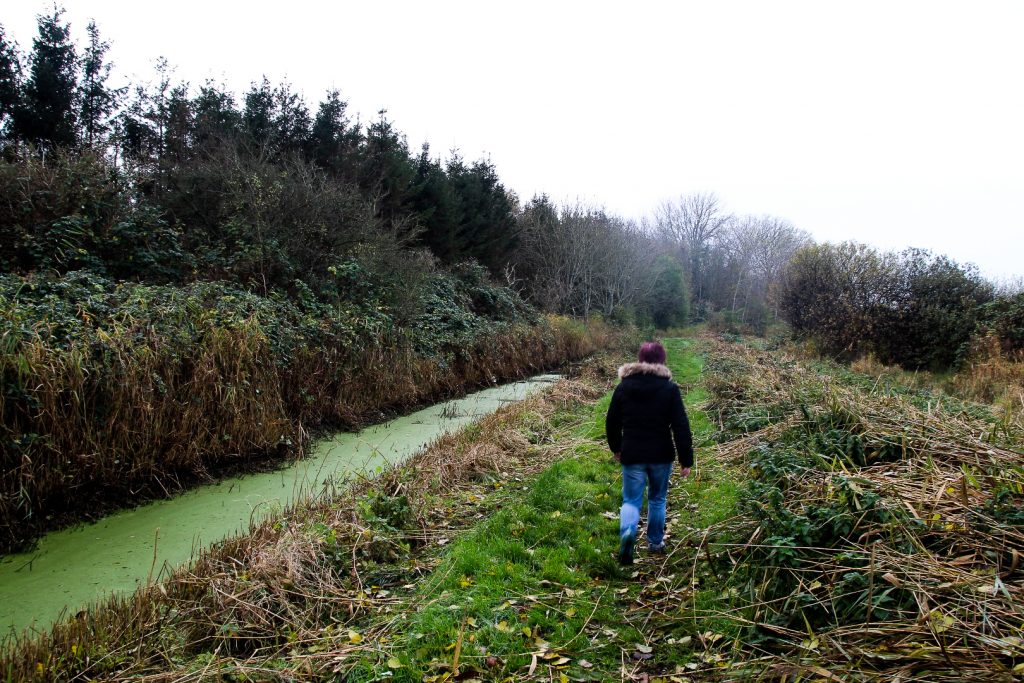
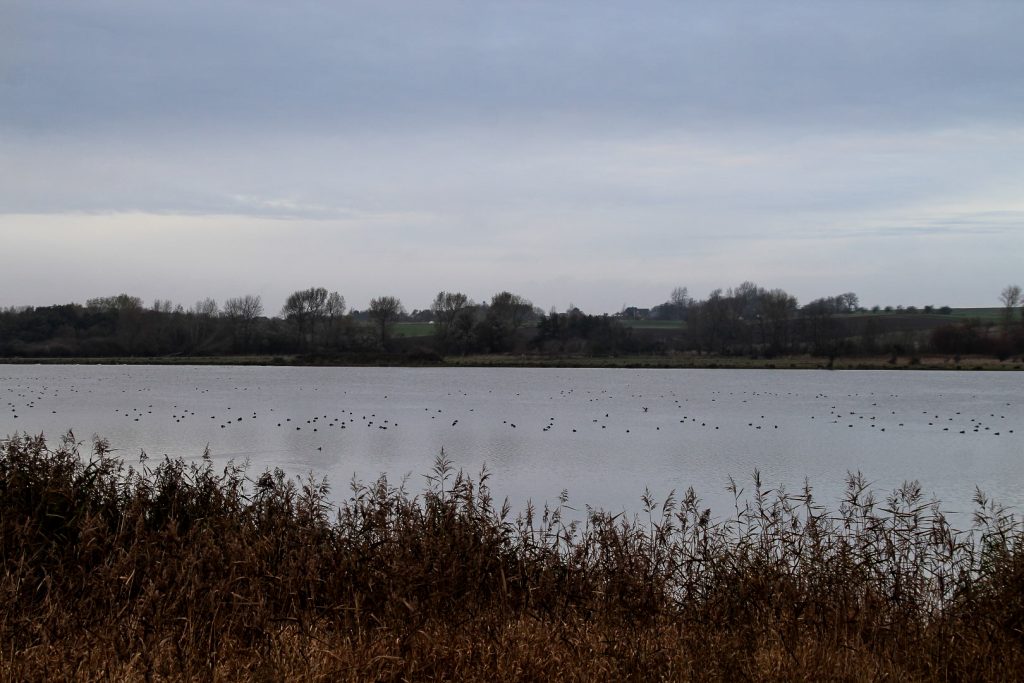
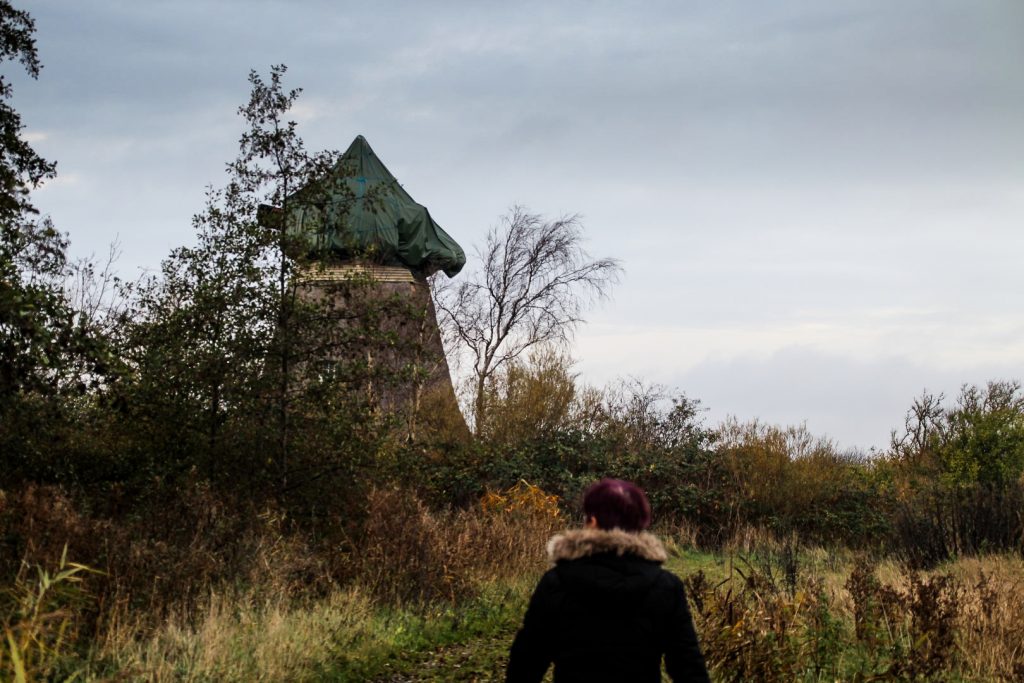
Our last stop for the day was a place we had specifically chosen for sunset, the cliffs at Voderup Klint that rise 33 meters above sea level over 3,5 km along the coast. A staircase lead us down from the parking lot to the stony beach below the cliffs where we waited for a while, hoping to see a display of warm colours as the sun said goodnight. Unfortunately, the colours never came and the sun left us with only a grey sky that soon turned black.
Back up the 163 steps we went, and then we returned to Marstal to get ready for an evening meal at Hotel Ærøhus in Ærøskøbing. Unfortunately, the food and service was quite disappointing, but we made up for it by having our own cozy evening with films and snacks afterwards.


The next morning, the sun shone in our windows and welcomed us to our last day on the island. We only had a few hours to spare before our ferry, but we did manage to squeeze in one last adventure.
We packed the car and drove to Urehoved, a peninsula just north of Ærøskøbing. The area is absolutely gorgeous for a walk so we parked the car a kilometer from the tiny village at the edge of the peninsula and strolled up there with the sun in our faces. Urehoved seemed like the perfect tiny community surrounded by beautiful and peaceful nature. I could certainly imagine living there!
When we returned to the car, I wasn’t quite ready to head to the ferry just yet. I’d noticed a long row of Ærø’s famous beach huts on the way to Urehoved that I wanted to photograph. So we ended our time on Ærø amongst these pretty beach huts that make the island unique and give it so much extra charm!

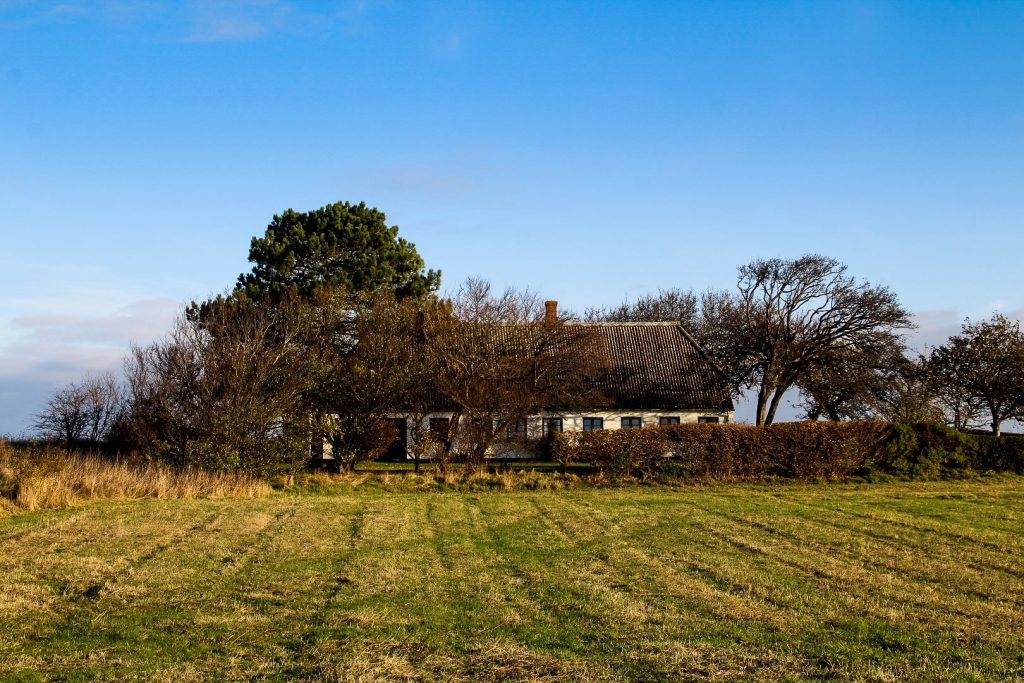





In perfect sunshine, we caught the ferry back to Svendborg, waving at Ærø as we sailed away. It had been an absolutely wonderful weekend, and Ærø had surprised both of us with its charm and beauty. That’s definitely one to return to!
Travel info on Ærø
GETTING THERE: Ærø is very well connected with inexpensive daily ferry journeys from Faaborg and Svendborg on Funen and from Fynshav on Als. Book your tickets here!
GETTING AROUND: Busses on the island are free and go around the island many times per day year-round! Although the easiest way to get around is by bringing your car on the ferry, the busses are a great alternative. You can find the bus plan here. In the spring, summer and autumn, biking or hiking would be an amazing way to get around! There are plenty of routes all over the island. See more here!
ACCOMMODATION: Fancy more than just a day trip? Ærø can accommodate any budget from camping and shelters to fancy hotels and airbnbs, although the choices are more limited outside the high season. We stayed in this cozy little airbnb which I can highly recommend for 1-2 people!
EATING AND DRINKING: The three biggest villages on the island have an abundance of cafés and restaurants, and there are also several supermarkets throughout the island. Most of the places are also open during the off-season, so you won’t go hungry on Ærø! Even as a vegan, I was able to survive just fine although my choices were quite limited at the cafés and restaurants, but the supermarkets stock lots of vegan foods!
Leave a Comment
Pingback: My November-December 2020: The move to Lolland – Northtrotter on 05/12/2020
Pingback: My September 2023: A precious new beginning with Minnie – Northtrotter on 05/12/2020

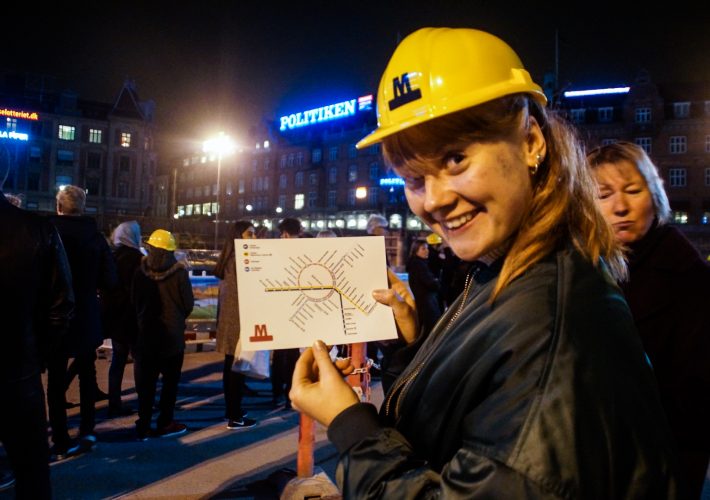

2 COMMENTS